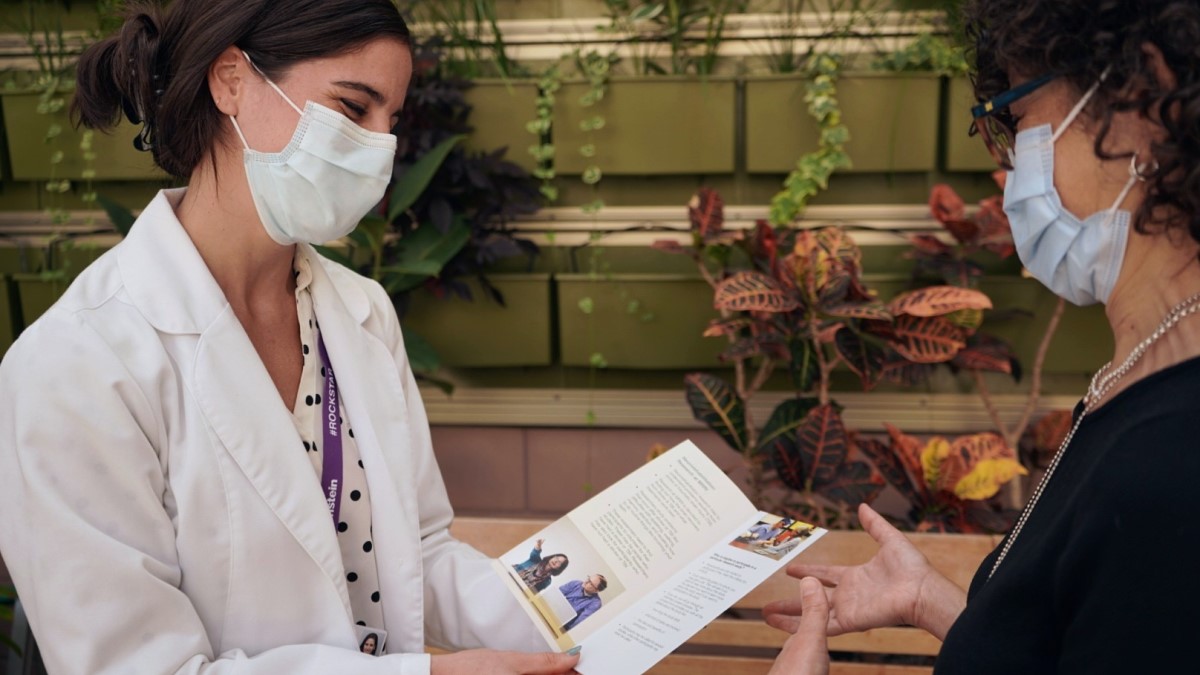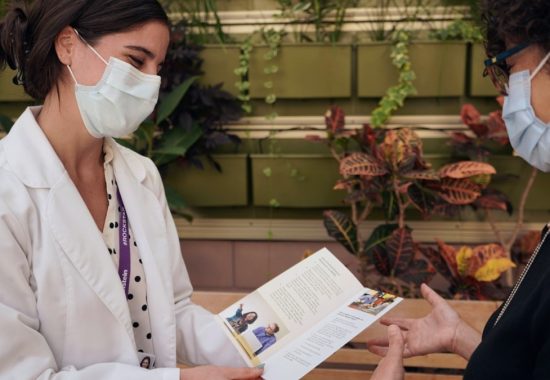
Clinical/research integration (CRI), like democracy, is a promising ideal that is an ongoing challenge to achieve. It has been part of the vision of Moss Rehabilitation Research Institute (MRRI) since its inception, but what does that vision entail, and what are the key elements required to make some progress toward the vision? “I believe that efforts toward CRI are essential for the success of a translational research enterprise and for a clinical enterprise that seeks to be on the leading edge of practice. We know how hard it is for evidence to make inroads into clinical practice, and it will take efforts on the part of both researchers and clinicians, to bridge this gap,” states MRRI Founding Director and Institute Scientist Emeritus John Whyte, MD, PhD.
CRI is, most importantly, a two-way street – an ongoing process of interaction and dialog among clinicians and researchers. Researchers, by nature, tend to simplify and isolate the problem they study. Clinicians, by nature, must address any problem in the context of the patient’s array of problems and strengths. Consequently, effective translational researchers need a rich understanding of the clinical context of their area of study. This ranges from the very practical (How long will most patients be available in the hospital for study? How busy is their schedule?) to the more scientific (How “important” and how “isolate-able” is this problem in the lives of the patients who have the problem, given the array of other problems they may also face?). On the other hand, researchers can contribute greatly to the clinical environment in both general and specific ways. “I have found that my training often allows me to plan ways of analyzing information for clinical problem solving even outside of my main areas of content knowledge. Just the mere tendency to think in terms of patterns of data and variability in those patterns can strengthen clinical problem solving,” remarks Dr. Whyte. Translational researchers also can synthesize emerging evidence in their area of content expertise and contribute it to discussions of care processes and quality improvement in those areas.
If that two-way vision is convincing, then why is it so challenging to achieve? Dr. Whyte summarizes below some of the barriers that he has encountered.
Attitudes and Leadership
Time and motivation are needed to undertake the communication envisioned by CRI. Ultimately, that means that clinical leaders as well as research leaders need to appreciate the value and support it. Articulating that value is challenging, since most of the assumed benefits are broad and long-term. Although leadership support is necessary, it isn’t sufficient. Front-line clinicians need to have an attitude of questioning their own practice to choose to engage with researchers. Researchers must similarly think they have something to learn from clinicians. Leadership attitudes may be the most useful place to start to build CRI – if not overall leaders, at least “local” leaders who can support small concrete efforts to toward it and who can help advocate for resources. And leaders can help select staff with the needed perspective and groom that perspective among those present.
Time and Money
Even with the most supportive leadership attitudes, it takes time to communicate beyond what’s absolutely necessary for patient care or research progress. But the process of CRI is, to varying extents, an exploratory process. It can be expected to deliver benefits periodically, and to spin off important practical projects, but it cannot be expected to deliver benefits hour-by-hour. One of the biggest challenges is the clinician’s typical productivity requirements and the money required to offset those requirements for “non-productive activity”. Although researchers tend to be more flexible hour-by-hour, if they are largely extramurally funded, they, too, must be quite narrowly focused on their research to succeed, not to mention that it’s not legal to conduct a clinical improvement project on grant-funded time. Ultimately, the process of CRI does require money, and those seeking to advance it would do well to consider philanthropic support, program demonstration grants, and institutional “R&D” investment as sources of funding.
Structures and Processes
The needs of clinicians and researchers for various kinds of infrastructure vary. “Over the years I have seen this in systems ranging from finance to electronic data systems,” Dr. Whyte explains. For CRI, one ultimately needs systems that meet both sets of needs. For example, clinical purchasing systems expect to order large amounts of materials from a stable set of suppliers; research purchasing systems need to provide payments to a variety of vendors, many of which are project-specific or short-term; a payroll system may not flexibly handle an employee whose salary comes partly from research and partly from clinical sources, particularly if that mix changes periodically. In terms of clinical data, researchers benefit from having every variable coded as present/absent or unknown, whereas clinicians prefer to be able to select problems that apply (and may not always exclude those that don’t). Systems for extracting EMR data may be well-suited to producing standard daily or monthly reports and ill-suited to designing and quickly revising one-time complex queries. Both clinical and research perspectives need to be represented when such systems are selected and designed.
Ethics and Communication
Sometimes concern about the ethical boundary between research and clinical care can be an obstacle to CRI. Clinicians should not be pressured to collect patient data for research purposes. But may researchers advocate for the clinical usefulness of data elements that would benefit them and seek their clinical adoption? How much information should a clinician provide to a researcher about a patient’s family situation or behavioral characteristics, to facilitate research recruitment? May clinicians adopt methods such as randomization and blinded treatment conditions in order to validate their clinical conclusions? How familiar should clinicians be with the principles of human subjects research ethics in order to practice in an environment that is rich in CRI? “While I believe that there are risks inherent in CRI of crossing an ethical boundary, and even current human subjects review criteria are rapidly evolving to address ‘learning healthcare systems,’ I don’t believe that building a wall between research and practice is the solution,” says Dr. Whyte. Rather, both sides of the dialog need to understand the possible benefits of CRI as well as the potential risks, and actively discuss the many ethical ambiguities that may be encountered. The challenges associated with CRI as well as the benefits to be achieved will continue to evolve. Small and concrete efforts at CRI (e.g., a joint journal club for clinicians and researchers; a jointly run lunchtime seminar; hiring clinicians as consultants on research grants) can begin to build support for expanding efforts. Designing the process and monitoring its implementation and impact are ongoing processes in a changing landscape. Scientists and clinicians at MRRI and MossRehab are dedicated to working towards better integrating efforts and systems between research and clinical care to continue to advance our understanding of recovery following neurological injury or disease and to provide the best treatments possible for patients with these conditions.


4 comment on “Integrating Rehabilitation Research and Clinical Care”